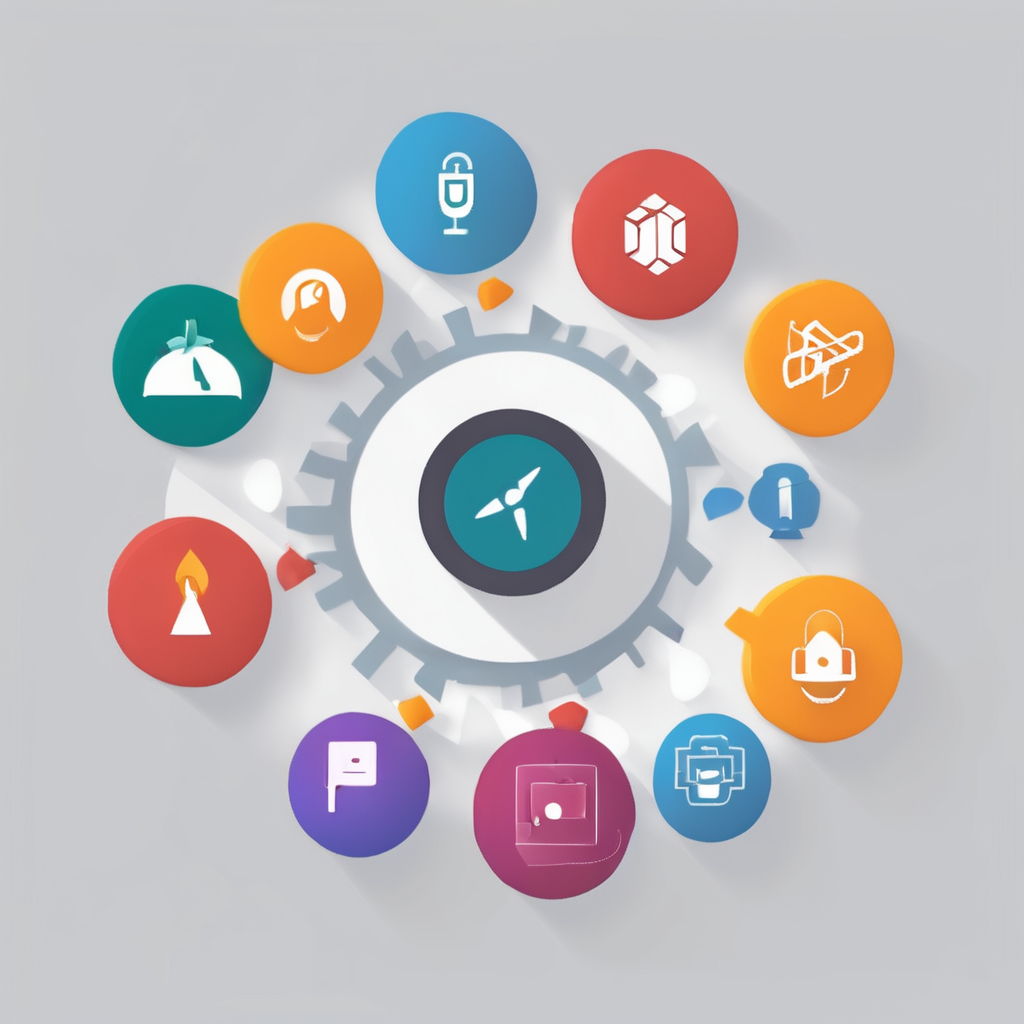Overview of Neuromarketing
Neuromarketing, as a discipline, delves into the intersection of neuroscience and marketing. It focuses on analysing and understanding consumer behaviour by applying psychological principles. By tapping into the workings of the brain, neuromarketing provides insights into customer preferences that can enhance traditional marketing strategies.
The concept began to gain traction in the early 2000s as companies sought innovative ways to connect with consumers. As neuroscience technologies evolved, businesses realised the potential of using brain data to decide product placements or advertising techniques.
Also read : Revolutionizing curriculum development: essential ai integration tactics for uk schools
Grasping the intricacies of consumer psychology is pivotal for crafting marketing strategies that resonate on a deeper level. Understanding what unconsciously attracts and retains a consumer’s attention can lead to:
- More persuasive advertising.
- Improved product design.
- Enhanced brand loyalty.
By integrating neuromarketing, companies can customise their marketing campaigns to align with innate consumer desires and motivations. As a result, marketing becomes more effective, increasing the likelihood of a purchase decision. This ultimately creates mutually beneficial outcomes where consumer needs are met efficiently while businesses achieve their objectives.
Also to read : Unlocking enhanced augmented reality shopping: innovative tactics for uk retailers
Key Neuromarketing Strategies for UK Agencies
In today’s digital landscape, understanding consumer behaviour is pivotal for successful UK marketing. Neuromarketing strategies offer a profound insight into this realm, enabling agencies to design campaigns that resonate deeply with their audiences.
Emotion-Based Marketing Techniques
Emotion-based marketing leverages emotional triggers to captivate and engage consumers. By tapping into fundamental emotions such as happiness, fear, or nostalgia, advertising can create powerful connections. A notable case is John Lewis’ Christmas campaigns, which consistently blend emotional storytelling with visuals and music to evoke warmth and generosity. To integrate emotional storytelling into marketing, consider appealing to universal experiences or cultural narratives that your audience identifies with.
Visual and Sensory Branding
Visual elements significantly sway consumer perceptions. Visual branding should align with a brand’s core message to enhance recall and recognition. Sensory branding goes a step further by engaging multiple senses, creating an immersive experience. Brands like Lush have successfully employed sensory marketing by offering not just visually appealing products but also distinctive scents and textures that consumers associate with indulgence and self-care.
Behavioral Targeting and Personalization
Personalized marketing relies on detailed consumer data, using tools like analytics software to tailor content to individual preferences. Behavioural targeting enables brands to deliver relevant messages at optimal times, boosting engagement. Personalization has been shown to increase conversion rates, as campaigns feel more relatable and timely, offering customers exactly what they need when they need it.
Tools and Metrics for Neuromarketing Success
In the quest to understand consumer behaviour, neuromarketing tools have become indispensable. These tools capture subconscious reactions to marketing stimuli. Leading the charge are EEG (electroencephalography) and fMRI (functional magnetic resonance imaging), which provide insights into brain activity and emotional engagement. Such sophisticated tools allow marketers to tap into consumers’ genuine preferences, often unattainable through traditional methods.
The effectiveness of neuromarketing efforts hinges on performance metrics. Key indicators include emotional engagement, brand recall, and purchase intent. These metrics help gauge whether an advertisement resonates with its audience or falls flat, ensuring high precision in predicting campaign success.
A/B testing and analytics are critical in fine-tuning neuromarketing strategies. By comparing two versions of a marketing asset, A/B testing highlights which elements drive consumer behaviour. This iterative process enables marketers to rectify flaws and optimise campaigns for maximum impact.
Ultimately, leveraging neuromarketing tools and focusing on performance metrics bolster marketing effectiveness. Marketers can access genuine consumer insights by employing technologies like EEG and fMRI, resulting in more impactful campaigns. Embracing A/B testing further refines these efforts, ensuring strategies are data-driven and primed for success.
Consumer Behavior Insights
Understanding consumer insights is essential for adapting to changing market conditions and refining marketing strategies. Buying behavior is continually shaped by both internal motivations and external influences which can be observed through various market trends.
Psychological Triggers in Consumer Decisions
Psychological triggers are powerful forces that significantly influence consumer purchase decisions. They include emotional attachment, social proof, scarcity, and urgency. Marketers can identify these triggers by studying patterns in buying behavior and recognizing cues that prompt action. For example, a sense of urgency, created by limited-time offers, effectively spurs impulse purchases. In the UK, personalised recommendations harness the power of social proof, nudging consumers toward products endorsed by their peers or influencers. Awareness of these triggers enables marketers to leverage them effectively, tailoring campaigns that resonate with the target audience.
Current Trends in UK Consumer Behavior
Recent market trends in the UK highlight a growing preference for sustainable and eco-friendly products. Neuromarketing techniques, which delve into consumers’ subconscious preferences, are increasingly employed to align with such trends. Brands now predict that future consumer behavior will shift towards even greater environmental awareness and tech-driven solutions. This includes the rise of virtual reality shopping experiences and enhanced personalization driven by artificial intelligence, changing how consumers interact with brands.
Case Studies of Neuromarketing in Action
Delving into neuromarketing examples reveals insights into its profound impact on campaigns. In the UK, several successful neuromarketing case studies showcase ingenious use of consumer brain responses to enhance marketing strategies. For instance, a prominent beverage company utilised eye-tracking and EEG technology to design adverts that significantly amplified customer engagement and marketing success. These tools revealed colours and images that sparked the most genuine interest, effectively guiding the creative direction.
However, not all strategies hit the mark. Lessons learned from failures often highlight the misalignment between brand message and consumer perception. A classic example involved a retail chain that focused too much on sophisticated brain imaging, neglecting emotional resonance. Analysing these failures underscores the importance of balancing scientific data with traditional; emotional appeal remains a key ingredient.
For marketing agencies eager to emulate these success stories, adapting strategies based on neurological insights can offer a competitive edge. Recommendations include integrating simple neuromarketing tools, like facial coding, to assess real-time reactions. By refining approaches with these insights, marketing professionals can create campaigns that truly resonate, leading to greater marketing success.
Expert Insights and Interviews
Delve into the world of expert opinions and gather valuable industry insights, particularly in the realm of neuromarketing. Understanding marketing trends is crucial for staying competitive in the ever-evolving landscape.
Interviews with Neuromarketing Experts
Engage with leading figures in the field through an enlightening Q&A session. Discover their perspectives on crafting effective neuromarketing strategies. These industry leaders offer unique insights into harnessing consumer behaviour science to enhance your marketing tactics.
Learn about the potential future of neuromarketing, especially as it pertains to the UK market. Their insights provide a roadmap for navigating upcoming shifts and technologies. Such knowledge equips agencies to remain competitive and thrive amidst change.
Collaborations and Partnerships
Forge strategic partnerships with neuromarketing specialists to drive your marketing success. These collaborations have proven vital in transforming marketing efforts, exemplified by numerous successful examples. Identify guidelines for finding and working effectively with neuromarketing experts to leverage their expertise efficiently.
Engaging in partnerships enhances your team’s understanding of consumer psychology, providing a competitive advantage. Fostering these relationships can significantly boost your marketing strategy’s effectiveness, aligning with the latest industry insights and trends.











